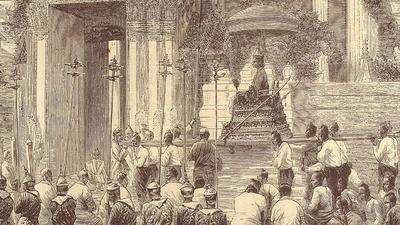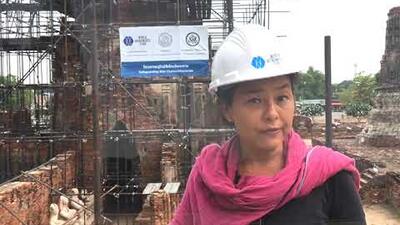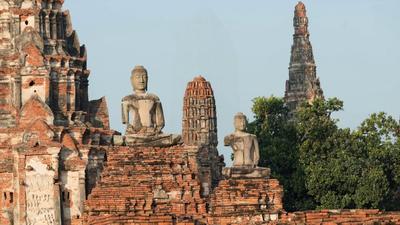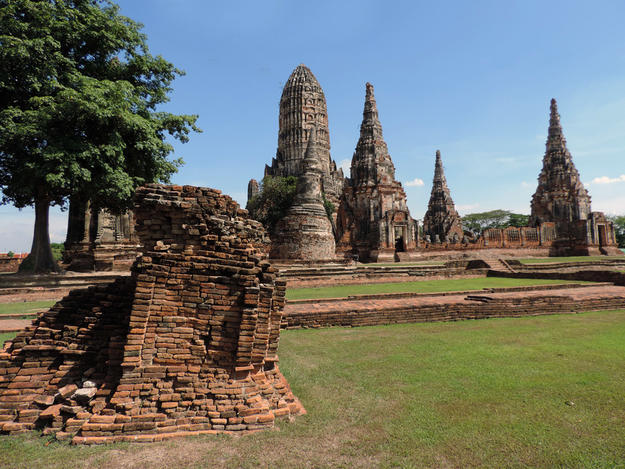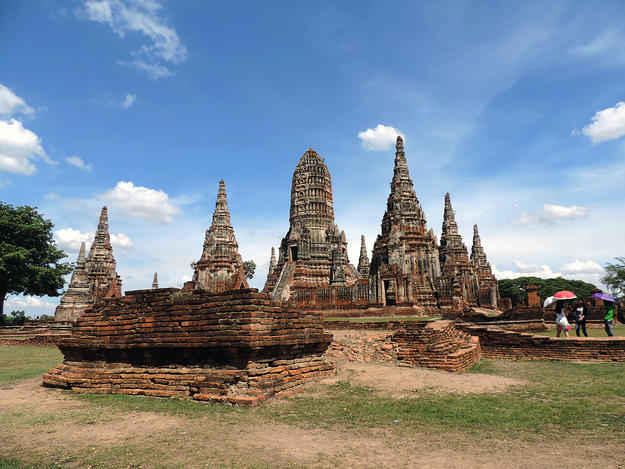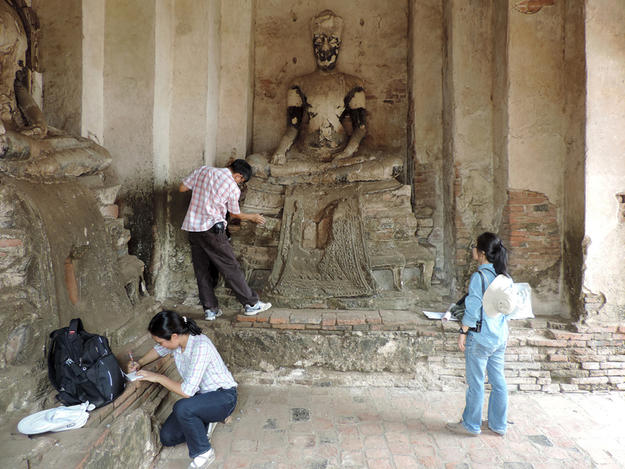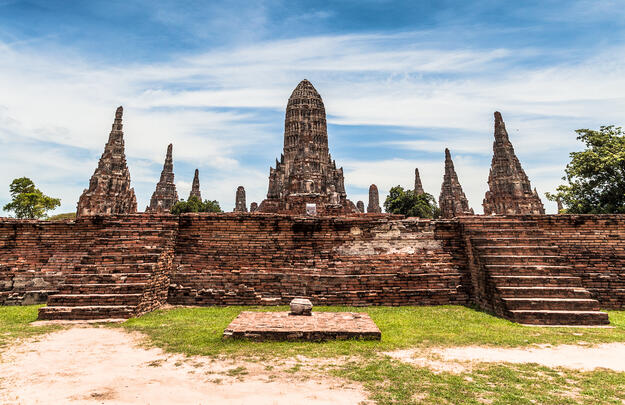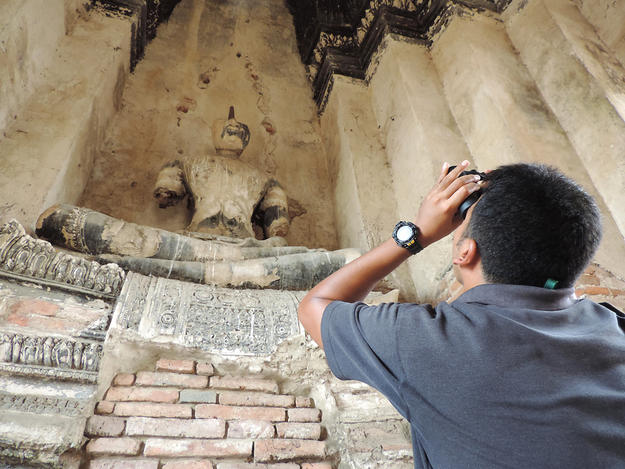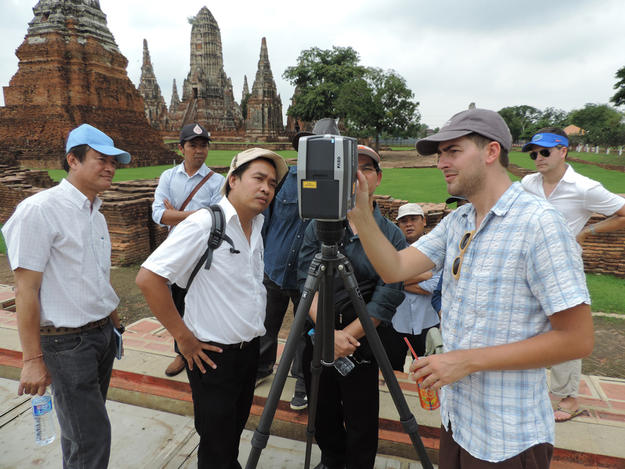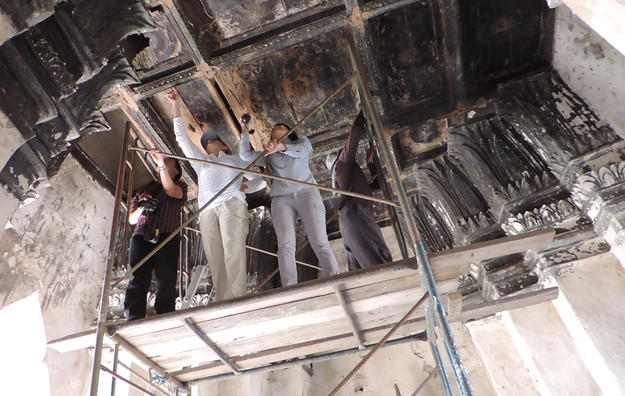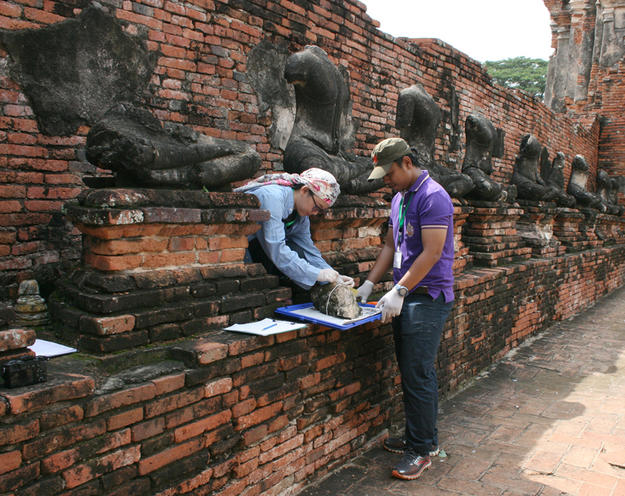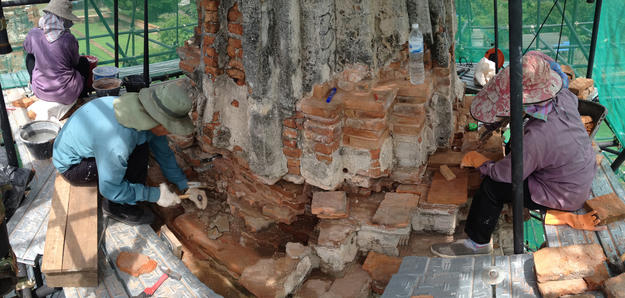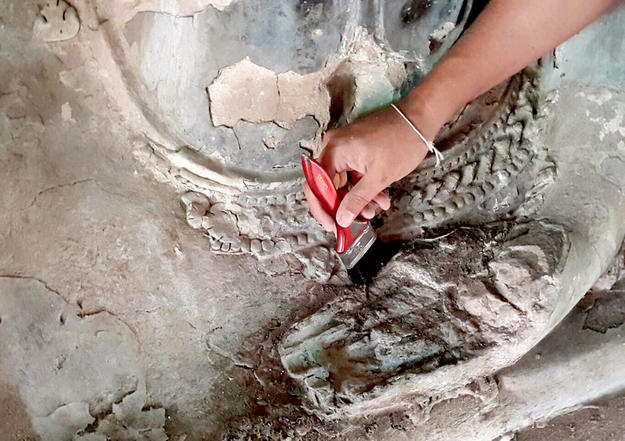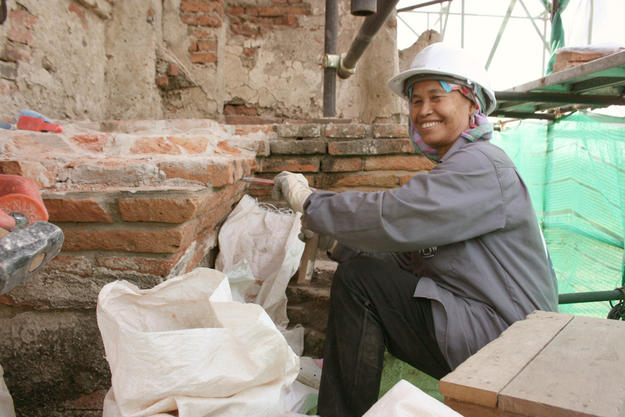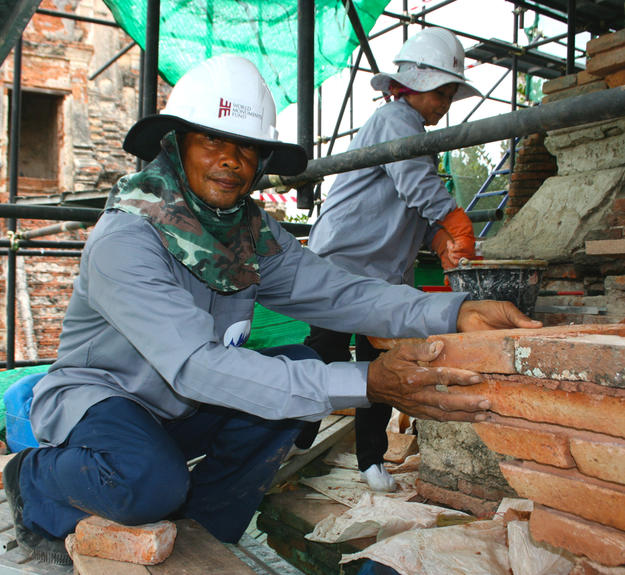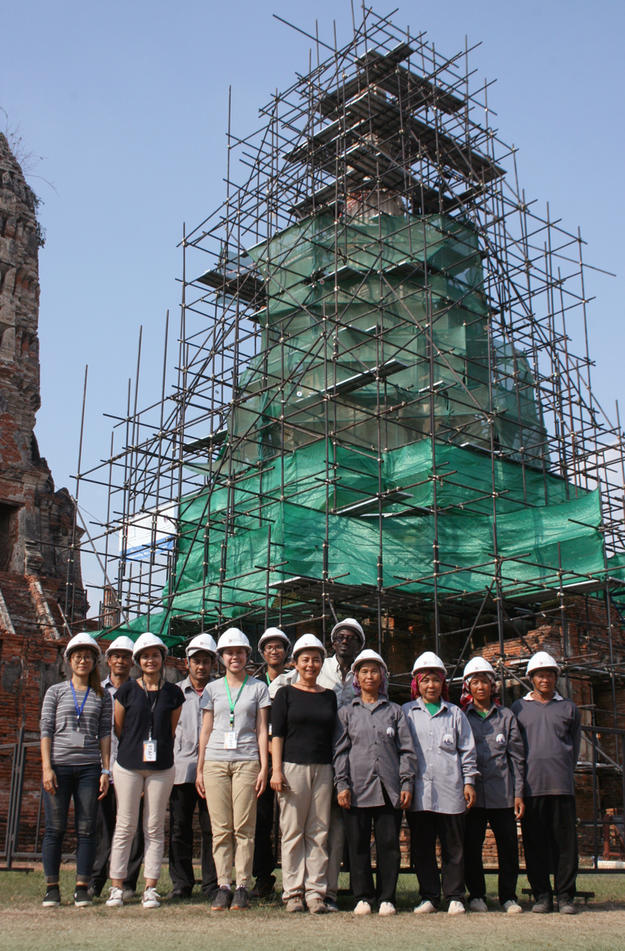Wat Chaiwatthanaram
Site and Significance
A Historic Buddhist Monument
Identified by cultural historians as the structure most emblematic of Buddhism’s influence on Thai society, the Buddhist temple of Wat Chaiwatthanaram was commissioned in 1630 by King Prasat Thong in the traditional style with Khmer influences. The temple is situated 80 kilometers north of Bangkok within the ancient city of Ayutthaya, the capital of the Siamese kingdom (1350–1767).
While Ayutthaya was once a thriving economic center, Wat Chaiwatthanaram was until very recently abandoned, subject to decay and looting, and encroached upon by unlicensed residential housing. But in 1987, after this illegal housing was demolished, the Fine Arts Department of Thailand (FAD) began conserving the site as an archaeological ruin. Considered one of Thailand’s most significant monuments, Wat Chaiwatthanaram sits adjacent to the Historic City of Ayutthaya, a UNESCO World Heritage site, and is of paramount economic value to the local population, as thousands of tourists visit the site every week.
Sitting atop a square masonry platform, a thirty-five-meter-high central prang (tower-like spire) is surrounded by four small prangs, which are in turn flanked by eight merus (conical pavilions), structures used as crematoria for members of the royal family, that sit outside the platform’s perimeter. Originally, paintings decorated the interior walls of the merus, and relief scenes depicting the life of the Buddha, as well as gilded Buddha image statues, covered the exteriors. Unfortunately, fragments are all that remain of these decorative elements.
Our Involvement
A Need for Immediate Attention and Support
Severe flooding in Thailand accelerated conservation problems at Wat Chaiwatthanaram, elevating its preservation status to a site in need of immediate attention. That same year, World Monuments Fund (WMF) was invited by the Fine Arts Department of Thailand (FAD) to review deteriorating conditions due to the recent environmental changes. WMF performed a subsequent investigation of the damage to the temple's fragile stucco and remaining sculptural elements.
After reviewing general conditions and realizing the inadequacies of current flood protection measures, WMF and the FAD agreed to collaborate, and in 2012, WMF was awarded support to undertake critical preliminary work. Analysis included technical surveys, conditions surveys of the materials of the temple and its decorative elements, thorough documentation (including new photography), and the determination of high priorities for conservation. In addition, WMF produced a master drainage and flood plan, laser scanned the complex, and co-designed a new south flood wall, which was constructed by the FAD.
Building Capacity for Conservation and Stewardship of Thailand's Heritage
WMF’s work at Wat Chaiwatthanaram has transitioned through the years from emergency response to a focus on a conservation campaign at the temple’s merus and the galleries that connect them. Despite these changes in focus, a continuous objective of the project has been the use of the conservation process as a training tool to build capacity within the FAD and its Thai consultants for the long-term stewardship of the site and other heritage sites in the country.
Starting in 2013, WMF’s project team instituted training programs for new conservators and staff of the FAD focusing on Wat Chaiwatthanaram's ornamental merus, whose repetitious forms provide an ideal case study of conservation challenges common in Thailand related to building materials. A pilot program at Meru C3 provided a variety of original exterior material to study, including fired brick and lime mortar masonry and stucco finishes.
The work at Meru C3 also included some of the structure’s interior elements. The project extended to the ruinous galleries that connect the merus, previously enclosed spaces containing Buddha statues that had long been exposed to the elements. With the pilot program at Meru C3 successfully completed, conservation and training moved to Merus C4, C5, and most recently, Meru C6. The work has become a best practice model for heritage conservation in Thailand.
The Future of Conservation at Wat Chaiwatthanaram
In July 2021, WMF launched a six-week conservation internship program with the Fine Arts Department in Thailand (FAD) and the U.S. Embassy in Bangkok. Five university students were selected to conduct hands-on conservation work at Wat Chaiwatthanaram throughout the summer alongside WMF's local project team. The program further builds on the relationship between academia and the world of heritage preservation in Thailand.
Learn More
World Monuments Fund safeguards cultural heritage around the globe, ensuring our treasured places are preserved for present and future generations.
Sign up for our newsletter to receive regular updates on our projects, stories from the field, upcoming events, and more!
![]()
World Monuments Fund's work at Wat Chaiwatthanaram has been made possible, in part, by The Robert W. Wilson Charitable Trust, the U.S. Ambassadors Fund for Cultural Preservation (AFCP), and the U.S. Embassy Bangkok.
Videos
